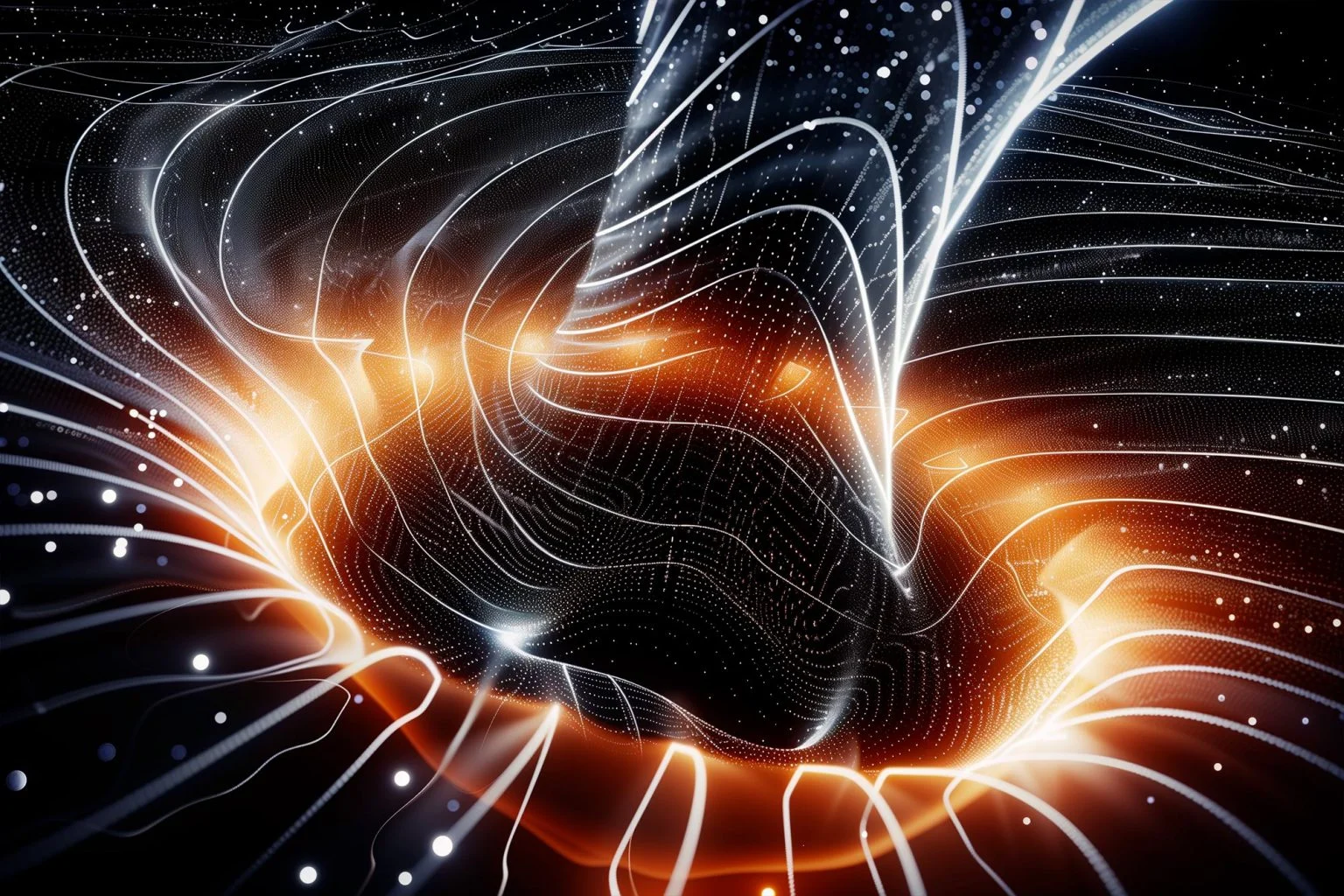"Black hole accretion disks emit varying light due to the black hole’s spin, recent simulations indicate. This new insight could help explain the variable brightness of these cosmic phenomena. Credit: SciTechDaily.com" (ScitechDaily, Black Hole Spins Unravel the Mystery of Ultraluminous Light)
"Gas swirling around black holes forms disks that are among the most effective energy converters in the universe, emitting light and jets of plasma. Recent simulations have shown that as black holes spin, these disks can wobble, changing the direction of what they emit." (ScitechDaily, Black Hole Spins Unravel the Mystery of Ultraluminous Light)
Superluminous plasma orbits black holes. That plasma has a higher temperature and higher luminosity than the Eddington mass limit allows. The problem with the Eddington mass limit is that it is made for "regular stars," and nuclear reactions start from inside it. The black hole inside the transition disk is like a vacuum.
It pulls energy inside it, and the superstrong gravity effect keeps the disk in its form. Regular stars transmit much energy in the infrared and visible light forms. The black holes send lots of gamma- and X-ray radiation that has another type of effect on the material disk. X- and gamma-rays are the result of high-energy reactions near the black hole or its event horizon.
The X- and gamma rays transfer less energy to the transition disk than IR radiation. The IR radiation transfers lots of energy to the material. That means that the IR radiation breaks the form of material very effectively because it increases the free energy in the system. A black hole forms an energy dump that pulls free energy away from the material disk. And that's why a black hole's material disk will not follow the Eddington mass limit.
Another thing is that the black hole's gravity and other energy fields are denser than any other object. A black hole is the only object in the universe that puts photons to orbit it. That means the black hole can form spiral light. When the photons escape from the space around the spin axle near the black hole's event horizon. Those photons can travel out from the black hole's gravity field to form a spiral-shaped structure or spiral light.
When we think about things like Hawking radiation that can destroy black holes, we face another little problem. When we think that a gravity wave is the thing that decreases the mass of the black hole, the question is: what launches those gravity waves? Does Hawking radiation turn into gravity waves when it reaches the event horizon?
In that model, the black hole is like an onion. Full of shells that formed from gravity waves or internal gravity fields. If we think that the gravity wave is the shell of the black hole, The event horizon is the point where the gravity field pulls a photon inside a black hole.
When a black hole sends gravity waves, it sends one of its shells away. That thing can release photons that are just below the event horizon. The Hawking radiation is hypothetical radiation that is left from black holes. That radiation can also boost the photon's energy level.
But how does Hawking radiation come from inside the event horizon? If nothing can escape from the black hole? The answer could be in another still hypothetical particle called Tachyon, the hypothetical faster-than-light particle.
Albert Einstein believed that gravity was only a feature of spacetime. That means the tachyon can also be one feature of an electron or photon. When a black hole pulls fields inside it, the photon must travel against the field or wave movement.
That could make it possible for photons or even particles with mass to cross virtually the speed of light. That happens when it travels against some field or wave movement. That means the black hole could form tauyons.
If escaping velocity is the same as the speed of light and there comes some kind of energy impulse from inside the gravity field, that impact can send photons to travel against that falling field. This means the photon can create a hole in the gravity field.
If a gravity field is the thing that acts like all other fields, there could be similar shadows that form in electromagnetic fields. This means that if tachyon is real, it can form a hole in the gravity field. And that hole makes it possible for photons to flee from that powerful gravity field.
That means that black holes should also form gravity tornadoes. Those spiral-shaped gravity waves are things. That is forming an idea of the wormhole. The gravity tornado is the hole in the Higgs field. The Higgs field is the energy field that forms the universe.
https://www.britannica.com/science/Eddington-mass-limit
https://scitechdaily.com/black-hole-spins-unravel-the-mystery-of-ultraluminous-light/
https://simple.wikipedia.org/wiki/Eddington_limit
https://en.wikipedia.org/wiki/Eddington_luminosity
https://en.wikipedia.org/wiki/Hawking_radiation
https://en.wikipedia.org/wiki/Tachyon





No comments:
Post a Comment
Note: Only a member of this blog may post a comment.